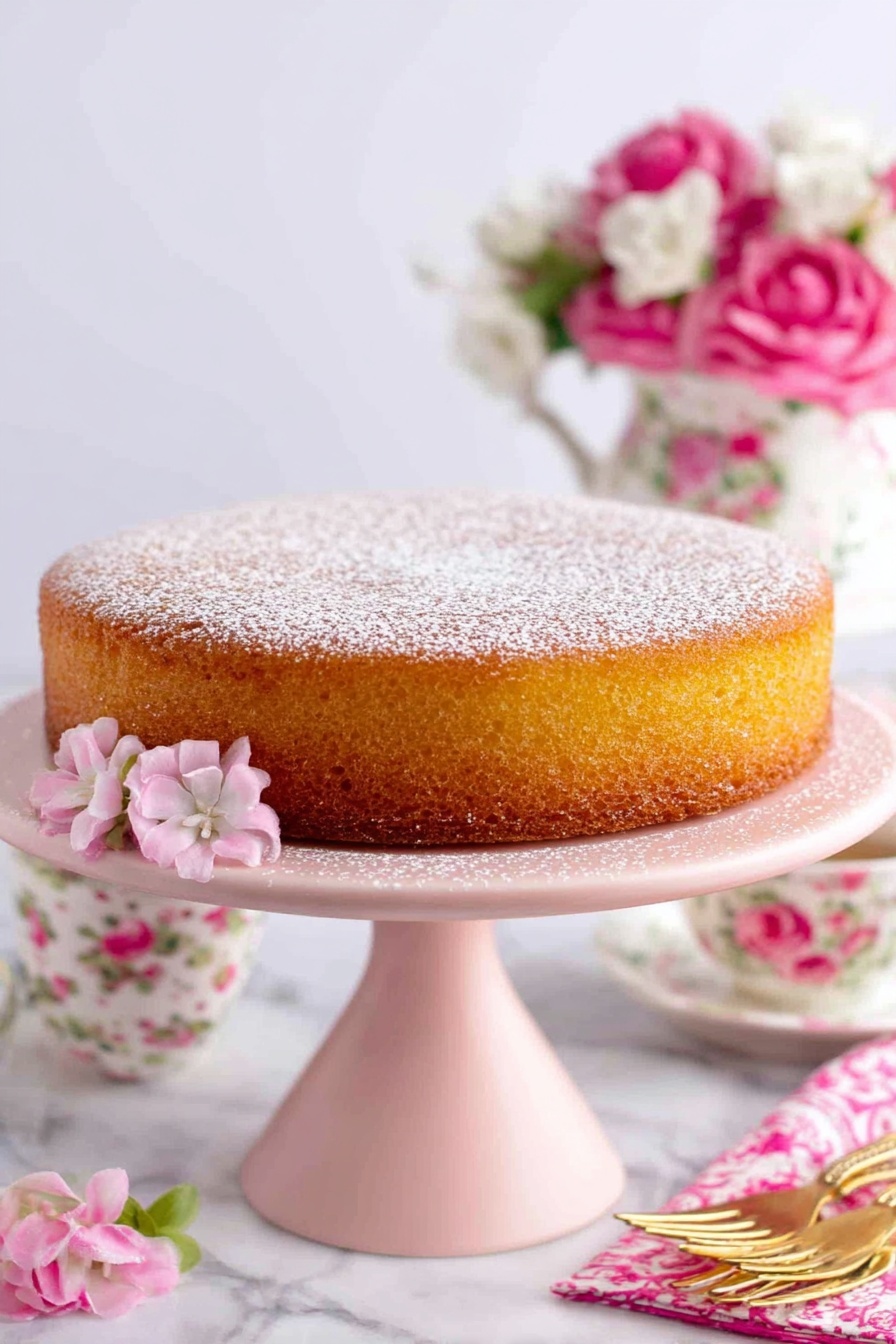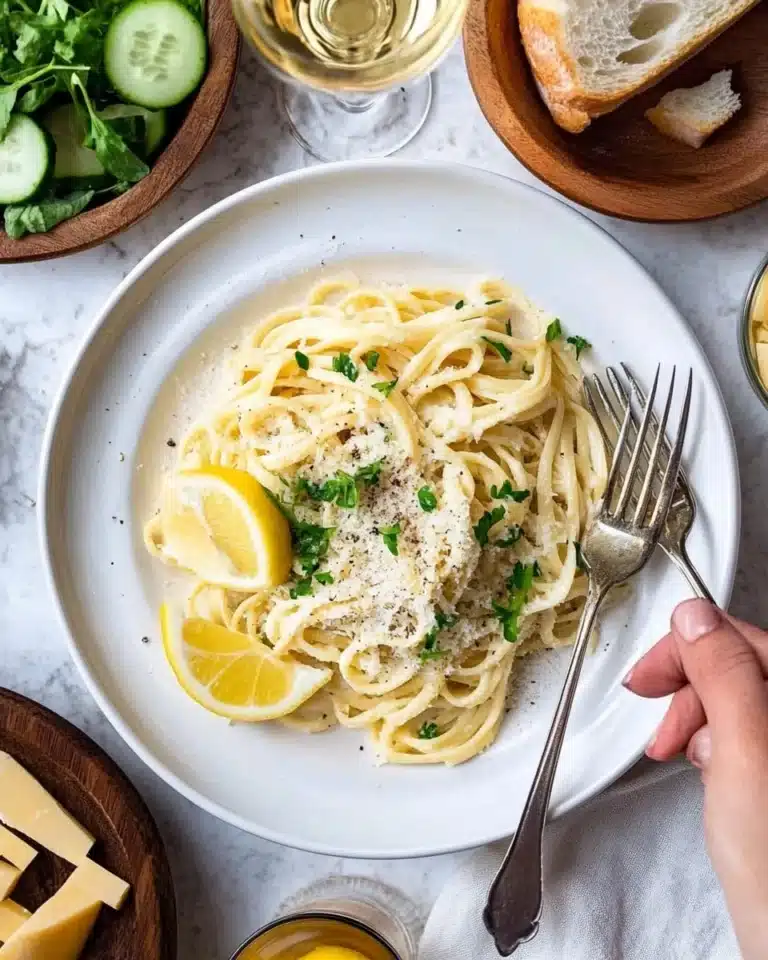
If you’re on the hunt for a cake that’s both elegantly simple and outrageously tasty, you’re in for a treat. This French Butter Cake Recipe is one of those gems that quickly became a household favorite for me—moist, buttery, and just the right amount of sweet. I promise, after you try it once, you’ll understand why it gets rave reviews every time. Stick with me, and I’ll walk you through making this fan-freaking-tastic cake that’s so easy you’ll wonder why you didn’t bake it sooner!
Why You’ll Love This Recipe
- Ridiculously Easy: Even if you’re not a baker, you’ll find this French Butter Cake Recipe straightforward and fail-proof.
- Perfect Texture: The cake is super moist and tender, thanks to a beautiful balance of yogurt and butter.
- Rich Flavors: A touch of almond and vanilla extracts elevate the flavor without overpowering.
- Versatile Dessert: It’s great plain, but also lovely with fruit or a dollop of whipped cream for company.
Ingredients You’ll Need
The magic of this French Butter Cake Recipe lies in simple pantry staples that come together effortlessly to create something special. Each ingredient has its role, from the yogurt keeping it tender, to the butter sauce that transforms this cake.

- Plain yogurt or Greek yogurt: This adds moisture and tenderness—Greek yogurt works well if you want a bit more tang.
- Granulated sugar: You’ll use some in the batter and also in the buttery sauce, which perks up the caramel notes.
- Large eggs: Eggs give structure and richness; at room temperature, they blend more smoothly.
- Vanilla extract: Brings warmth and depth of flavor; always use pure extract if you can.
- Almond extract: Just a whisper to add a distinct, inviting aroma without overwhelming.
- All-purpose flour: The classic choice for crumb structure and even rise.
- Baking powder: This helps the cake puff and rise beautifully.
- Salt: Balances the sweetness and enhances other flavors.
- Neutral flavored oil (like canola or sunflower): Keeps the cake moist but doesn’t compete flavor-wise.
- Butter: I use salted because it adds an extra layer of flavor in the buttery sauce.
- Water: Added to the butter sauce for just the right consistency.
Variations
I love experimenting with this French Butter Cake Recipe because it’s such a forgiving base. You can tweak it to suit what you have on hand or how you want the final flavor to feel. Don’t be shy about making it your own!
- Berry Twist: My family goes crazy when I fold fresh raspberries or blueberries into the batter before baking—adds a burst of juicy brightness.
- Gluten-Free: I’ve swapped in a gluten-free all-purpose blend with success; the texture holds up nicely.
- Spiced Version: Adding a teaspoon of cinnamon or cardamom to the dry ingredients brings cozy warmth—perfect for cooler months.
- Rich Chocolate: Mixing in a handful of mini chocolate chips or swapping some flour for cocoa powder creates a decadent variation I adore.
How to Make French Butter Cake Recipe
Step 1: Mix the Wet Ingredients Like a Pro
Start by whisking together your yogurt, sugar, eggs, vanilla, and almond extracts in a large bowl. I like to make sure the eggs are at room temp—it helps everything blend smoothly without lumps! You’ll want the mixture to be silky and glossy, signaling it’s ready for the dry ingredients. Don’t rush this step; a well-mixed batter makes for a better rise and crumb.
Step 2: Combine Your Dry Ingredients Gently
In a separate bowl, sift (or just whisk thoroughly) your flour, baking powder, and salt. Sifting here adds an extra step but makes for a lighter texture, which I personally love. Then, fold the dry ingredients into your wet mixture slowly, using a spatula—not a mixer! You want to keep as much air as possible in the batter to keep it tender and fluffy.
Step 3: Add in Oil & Bake
Next, stir in the neutral oil just until combined. This oil is key for keeping your cake moist without making it heavy. Pour your batter into a greased baking pan and smooth the top. Pop it in the oven, and you’ll want to bake at the right temperature—around 350°F (175°C)—for about 40 minutes, or until the top is golden and a toothpick comes out clean. I learned the hard way that opening the oven too often can cause the cake to sink, so try to resist peeking too much!
Step 4: Make and Pour Over the Butter Sauce
While your cake is baking, you can prepare the simple butter sauce that makes this cake so special. Melt butter in a saucepan, then stir in sugar, water, vanilla, and almond extract. When the cake comes hot out of the oven, poke holes gently on top with a skewer or fork and drizzle this sauce all over—this is what gives the cake its rich, sticky allure. My family officially declared this the best part!
Pro Tips for Making French Butter Cake Recipe
- Room Temperature Ingredients: This helps everything blend more evenly, resulting in a smoother batter and better cake texture.
- Gentle Folding: Skip the electric mixer for folding in dry ingredients so your cake stays fluffy, not dense.
- Poke Before Pouring Sauce: Making holes lets the butter sauce seep deep into the cake, locking in moisture and flavor.
- Don’t Overbake: Keep a close eye near the end; overbaking steals moisture, and nobody likes a dry butter cake!
How to Serve French Butter Cake Recipe

Garnishes
I usually keep it simple and let the cake shine, but if you want a little extra flair, a dusting of powdered sugar or a handful of sliced almonds on top is lovely. Fresh berries or a spoonful of whipped cream turn it into a fancy dessert without any fuss. Honestly, a little pat of whipped cream on a warm slice has made many occasions feel special in my house.
Side Dishes
This cake pairs beautifully with a cup of strong coffee or tea—perfect for afternoon gatherings. If you want to take it up a notch for brunch, serve it alongside fresh fruit salad or a creamy yogurt parfait. My kids especially love it with a side of vanilla ice cream for an indulgent treat.
Creative Ways to Present
For birthdays or special dinners, I’ve served the cake in small ramekins right from the oven with its buttery sauce spooned on top, making every portion feel like an individual indulgence. You could also slice it and layer with fresh fruit and cream to create a quick trifle-style dessert that everyone always raves about.
Make Ahead and Storage
Storing Leftovers
After baking, I let the cake cool completely and then store it in an airtight container at room temperature for up to two days. The butter sauce keeps it moist even after resting. If you have more time, the fridge works well too, but bring slices back to room temp before serving for the best flavor.
Freezing
I’ve had great luck freezing individual slices wrapped tightly in plastic wrap and stored in a ziplock bag. When you’re ready, thaw overnight in the fridge and warm gently to revive that fresh-baked experience. Freezing saves leftovers from going to waste and still delivers delicious cake anytime you crave it.
Reheating
Reheat cake slices in the microwave for about 20-30 seconds or pop them briefly into a warm oven. This gentle warmth helps soften the butter sauce and revives the moistness, making it taste just like it came right out of the oven.
FAQs
-
Can I use sour cream instead of yogurt in this French Butter Cake Recipe?
Absolutely! Sour cream works as a great substitute and will provide a similar tang and moisture level to the cake. Just make sure it’s plain and use the same amount as the yogurt called for.
-
Is it necessary to add the butter sauce on top?
The butter sauce is what sets this cake apart—making it extra moist and flavorful. However, if you’re watching calories or prefer a simpler cake, you can skip it and still enjoy a tender, tasty cake. Just know it won’t have quite the same luscious finish.
-
Can I make this French Butter Cake Recipe dairy-free?
Yes! Swap the yogurt for a dairy-free alternative like coconut or almond yogurt. Use dairy-free butter or margarine for the sauce and a neutral oil. The texture might be slightly different but still delightful.
-
How long does this cake stay fresh?
Stored in an airtight container at room temperature, this cake is fresh for about 2 days. Refrigerating extends that to around 4 days, but always check for freshness before serving.
Final Thoughts
This French Butter Cake Recipe holds a special place in my kitchen because it feels both homey and sophisticated at the same time. It’s easy enough for busy weeknights and elegant enough for weekend guests—pretty much a win-win. I encourage you to try it out soon; you might just find yourself baking it again and again, delighted by its buttery, tender perfection every single time!
Print
French Butter Cake Recipe
- Prep Time: 20 minutes
- Cook Time: 40 minutes
- Total Time: 60 minutes
- Yield: 12 servings
- Category: Dessert
- Method: Baking
- Cuisine: French-American
Description
This Ridiculously Easy French Butter Cake is a moist, tender, and flavorful dessert inspired by French grandmothers’ traditional cakes and the popular American Kentucky Butter Cake. It features a luscious blend of yogurt, eggs, and buttery vanilla-infused syrup that creates a rich, melt-in-your-mouth texture. Perfect for any occasion, this cake is simple to prepare yet impressively delicious.
Ingredients
Batter
- ½ cup plain yogurt or Greek yogurt
- 1 cup granulated sugar
- 3 large eggs
- 2 teaspoons vanilla extract
- ¼ teaspoon almond extract
- 1½ cups all-purpose flour
- 2 teaspoons baking powder
- ½ teaspoon salt
- ½ cup neutral flavored oil (ie canola, vegetable, sunflower, safflower, avocado or grapeseed)
Butter Sauce
- ⅓ cup granulated sugar
- 3 tablespoons butter (salted preferred)
- 1½ tablespoons water
- 1 teaspoon vanilla extract
- ⅛ teaspoon almond extract
Instructions
- Prepare the Batter: In a large mixing bowl, combine the plain or Greek yogurt with the granulated sugar and whisk together until smooth. Add the eggs one at a time, fully incorporating each before adding the next. Stir in the vanilla and almond extracts to infuse flavor.
- Mix Dry Ingredients: In a separate bowl, sift together the all-purpose flour, baking powder, and salt. Gradually add the dry ingredients to the wet mixture, gently folding to avoid overmixing, which keeps the cake tender.
- Add Oil and Combine: Slowly pour in the neutral flavored oil while stirring, ensuring the batter is well blended without lumps. The batter should be smooth and pourable.
- Bake the Cake: Preheat your oven to 350°F (175°C) and grease a suitable baking pan. Pour the batter into the prepared pan and bake for 35-40 minutes until a toothpick inserted into the center comes out clean and the top is lightly golden.
- Prepare the Butter Sauce: While the cake bakes, combine the granulated sugar, butter, and water in a small saucepan over medium heat. Stir continuously until the butter melts and the sugar dissolves completely. Remove from heat and stir in the vanilla and almond extracts.
- Pour Sauce Over Cake: Once the cake is out of the oven but still warm, use a skewer to poke holes evenly across the surface. Slowly pour the warm butter sauce over the cake, allowing it to seep in and enhance moisture and flavor.
- Cool and Serve: Allow the cake to cool in the pan for at least 15 minutes before slicing. Serve slightly warm or at room temperature for the best texture and taste.
Notes
- This cake combines the richness of French traditional butter cakes with the sweetness of American Kentucky Butter Cake, giving it a unique and deeply satisfying flavor profile.
- Use neutral oil to avoid overpowering the delicate flavors of vanilla and almond extracts.
- The batter should be mixed gently; overmixing can make the cake tough instead of tender.
- Pouring the butter sauce over the warm cake creates a moist, buttery finish that makes the cake exceptionally delicious.
- You can substitute plain yogurt with Greek yogurt for a richer texture but adjust moisture if necessary.
- The cake keeps well covered at room temperature for up to 2 days or refrigerated for a week.
Nutrition
- Serving Size: 1 serving
- Calories: 237 kcal
- Sugar: 23 g
- Sodium: 142 mg
- Fat: 13 g
- Saturated Fat: 3 g
- Unsaturated Fat: 10 g
- Trans Fat: 1 g
- Carbohydrates: 27 g
- Fiber: 1 g
- Protein: 3 g
- Cholesterol: 49 mg








